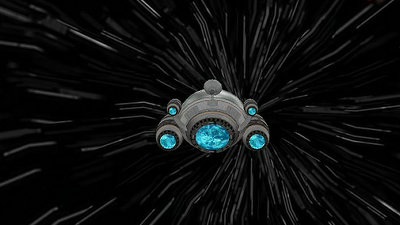What can be done to reduce the effects of 'cosmic radiation', which is a problem as space exploration becomes more active?

One of the major problems in space exploration is ionizing radiation called '
Shields up: New ideas might make active shielding viable | Ars Technica
https://arstechnica.com/science/2024/03/shields-up-new-ideas-might-make-active-shielding-viable/

There are two types of cosmic radiation: charged particles, mainly protons, produced by solar flares and the corona, and galactic cosmic rays, which are emitted by the activity of distant supernovae and neutron stars. Charged particles emitted by solar activity basically have an energy of 30 to 100 megaelectron
However, galactic cosmic rays store high energies ranging from 200 megaelectronvolts to several gigaelectronvolts, making them highly penetrating and difficult to protect the crew even with a spacecraft's thick shield. .
We living on Earth are protected from cosmic radiation by the Earth's magnetic field and atmosphere. Therefore, since the early days of space exploration, research has been conducted on ``active shields'' that protect crew members from cosmic radiation by deflecting charged particles similar to the Earth's magnetic field.
In the 1960s, NASA conducted research on active shields such as (PDF file)plasma shield , electrostatic shield, and (PDF file)magnetic shield . In fact, in 1967, it was reported that ``plasma shields and electrostatic shields are promising, but they require a huge amount of power of 60 million volts to actually operate.''
These studies have led to the development of active shields to protect against cosmic radiation. In fact, at the European Organization for Nuclear Research (CERN) in Geneva, Switzerland, active shielding using superconducting magnets was developed in the late 1990s, said Roberto Patiston, former director of the Italian Space Agency.

In 2002, ESA assembled a team of experts from CERN and other European research institutions to consider protection from cosmic radiation during deep space exploration missions. The research team then devised a protection system equipped with 12 superconducting coils consisting of

Based on the system devised by the research team, ESA has begun developing a further large-scale active shield, the Space Radiation Superconducting Shield (SR2S). The SR2S has achieved a significant improvement in magnetic strength and succeeded in significantly reducing exposure to cosmic radiation, but its weight has increased to 100 tons, making it a payload that can be carried by SpaceX's large spaceflight rocket '

Battiston said, ``Magnetic coils generate large forces, and the system requires a support structure that can withstand this force. Therefore, the stronger the magnetic force, the heavier the support structure will inevitably be.'' I did.
So the researchers devised a fundamentally different design, a system called a 'pumpkin structure,' in which three or four small shields are placed around the spacecraft. The 'pumpkin structure' maintains the same efficiency as previously devised active shields, but has succeeded in reducing the weight to approximately 40 tons, less than half the weight.

However, space agencies in various countries have determined that there is little point in protecting an 8-ton exploration module using a shield that weighs approximately 40 tons, and no progress has been made in installing magnetic shields on rockets that will actually be launched. yeah.
Still, in 2022, scientists Elena Donghia and Paolo Desiati from the University of Wisconsin in the United States devised the CREW HaT, which weighs only 24 tons but can cut up to 70% of the cosmic radiation that falls on the spacecraft. They submitted their CREW HaT idea to NASA's Innovative Advanced Concepts program and received funding.

Additionally, the Space Radiation Analysis Group at NASA's Johnson Space Center has devised a giant ring-shaped electrostatic shield inspired by

``Shields like this are no longer the stuff of science fiction,'' said Daniel Fry of the analysis group.
Space development agencies around the world are conducting research into active shields in order to reduce the amount of cosmic radiation that falls on astronauts while achieving further weight reduction. 'There is an urgent need to find room-temperature superconductors for active shields, where the cooling system accounts for most of the weight,' Battiston said.
Related Posts:
in Science, Posted by log1r_ut







